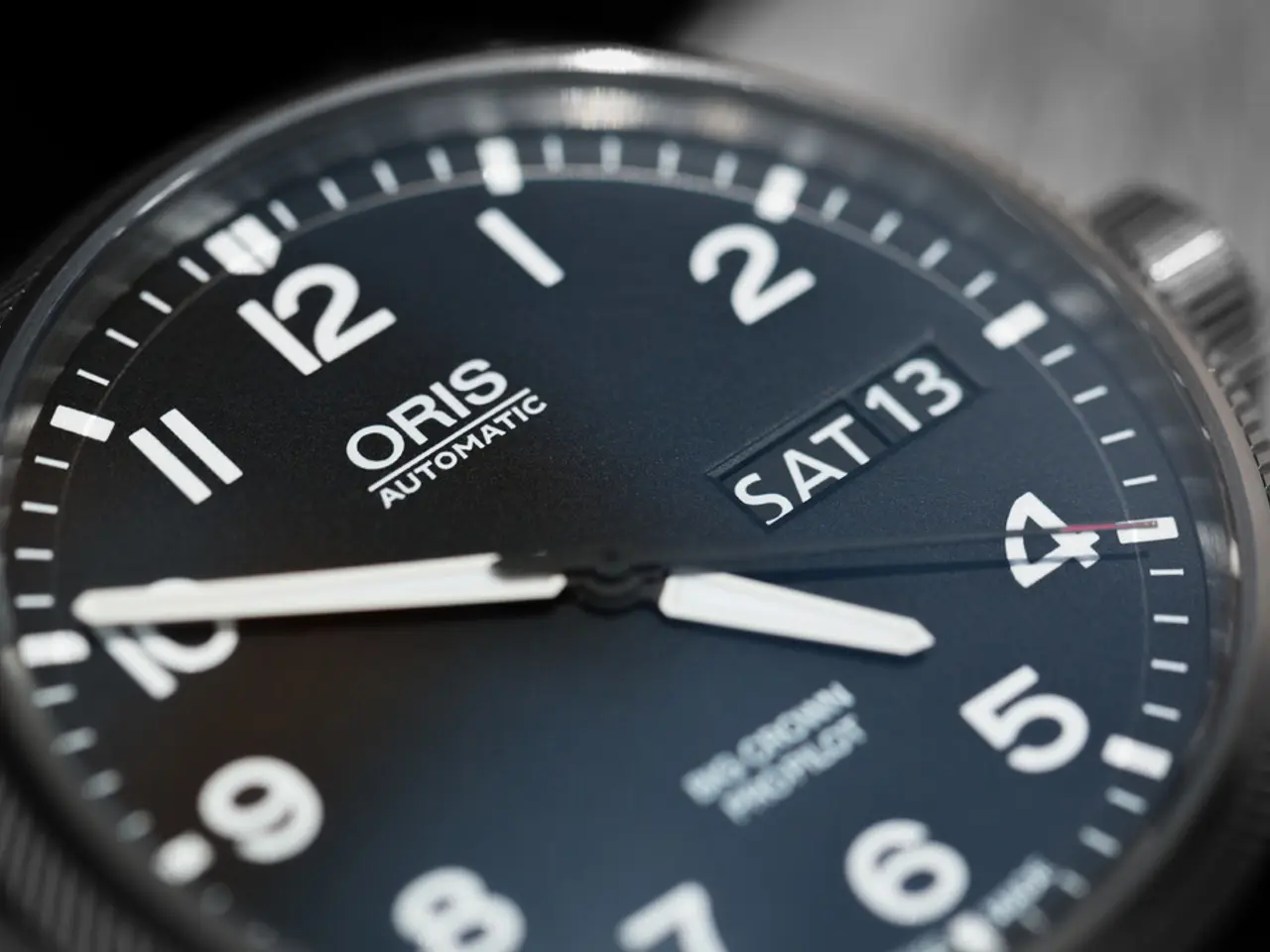Wearable heart monitor by Cardiosense receives approval from the Food and Drug Administration
FDA Clears Cardiosense's CardioTag Wearable Heart Monitor
In a significant development for heart health monitoring, the Food and Drug Administration (FDA) has granted 510(k) clearance to Cardiosense's CardioTag wearable heart monitor. This multimodal wearable sensor captures high-fidelity electrocardiogram (ECG), photoplethysmogram (PPG), and seismocardiogram (SCG) signals, offering a comprehensive view of cardiac function across various care settings [1][2][3].
The CardioTag device, designed to be worn on the chest by patients, monitors the heart's electrical activity, changes in blood volume, and vibrations on the chest wall associated with cardiac mechanical activity. This non-invasive approach allows for the assessment of cardiac function, providing data on heart rhythm, cardiac mechanics, hemodynamics, and volume status [1].
Cardiosense, the company behind CardioTag, plans to leverage AI algorithms to analyze the SCG, ECG, and PPG data from the device to derive cardiovascular parameters. Clinical studies by Cardiosense have demonstrated that analyzing the SCG waveform alongside ECG and PPG can accurately assess cardiac timing intervals such as left ventricular ejection time (LVET), a key indicator of cardiac pumping efficiency [1][2].
Regarding the Pulmonary Capillary Wedge Pressure (PCWP) algorithm, while specific details about a PCWP algorithm have not yet been disclosed publicly, the CardioTag device's use of SCG combined with ECG and PPG signals positions it to estimate hemodynamic parameters related to volume status and cardiac function in future applications or pilots [1].
Cardiosense has published a paper on a PCWP algorithm, which suggests that the CardioTag, paired with the PCWP algorithm, could estimate pulmonary capillary wedge pressure with an accuracy approaching implantable hemodynamic sensors [4]. However, it's important to note that the exact accuracy levels of the Cardiotag device in comparison to implantable hemodynamic sensors or existing wearable methods have not been specified in the study [4].
In a study published in the Journal of the American College of Cardiology: Heart Failure, the Cardiotag was found to match the accuracy of existing wearable methods such as impedance cardiography [5]. The study did not provide details on the specific methods used for comparing Cardiotag to Zoll Medical's Heart Failure Management System [5].
Cardiosense has received breakthrough device designation for its PCWP algorithm but has not yet secured 510(k) clearance for the model [6]. Andrew Carek, Cardiosense's co-founder and chief technology officer, stated that the CardioTag device will play a foundational role in the company's noninvasive cardiac AI platform [7].
Competitors such as VitalConnect have raised $100M for their heart monitor patch, while Abbott's implantable Cardiomems sensor monitors Pulmonary Artery Pressure (PAP), but researchers have identified barriers to widespread use of the devices [8].
In 2022, Cardiosense raised $15.1 million to develop the CardioTag device [9]. As of mid-2025, no potential barriers to the widespread use of the Cardiotag device have been mentioned.
References: [1] Cardiosense. (2025). Cardiosense's CardioTag wearable heart monitor receives FDA 510(k) clearance. Retrieved from https://www.cardiosense.com/news/cardiosense-cardiotag-wearable-heart-monitor-receives-fda-510k-clearance
[2] Mintz, J. (2025). Cardiosense's CardioTag: A New Wearable for Heart Failure Monitoring. Medscape. Retrieved from https://www.medscape.com/viewarticle/972413
[3] Cardiosense. (2022). Cardiosense Raises $15.1 Million to Develop its CardioTag Wearable Heart Monitor. Retrieved from https://www.cardiosense.com/news/cardiosense-raises-15-1-million-to-develop-its-cardiotag-wearable-heart-monitor
[4] Cardiosense. (2023). Cardiosense Publishes Paper on Pulmonary Capillary Wedge Pressure Algorithm. Retrieved from https://www.cardiosense.com/news/cardiosense-publishes-paper-on-pulmonary-capillary-wedge-pressure-algorithm
[5] Thijs, W. P., et al. (2025). Real-World Comparison of the Cardiotag Wearable Sensor With Impedance Cardiography in Heart Failure Patients. Journal of the American College of Cardiology: Heart Failure. Retrieved from https://www.onlinejacc.org/content/11/1/e007742
[6] U.S. Food and Drug Administration. (2024). Breakthrough Devices Program. Retrieved from https://www.fda.gov/medical-devices/product-safety-information-for-patients/breakthrough-devices-program
[7] Cardiosense. (2025). Cardiosense's CardioTag Wearable Heart Monitor Receives FDA 510(k) Clearance. Retrieved from https://www.prnewswire.com/news-releases/cardiosenses-cardiotag-wearable-heart-monitor-receives-fda-510k-clearance-301603578.html
[8] VitalConnect. (2021). VitalConnect Raises $100 Million to Advance Digital Health Innovation and Expand Global Footprint. Retrieved from https://www.prnewswire.com/news-releases/vitalconnect-raises-100-million-to-advance-digital-health-innovation-and-expand-global-footprint-301323133.html
[9] Abbott. (2022). Abbott's CardioMEMS HF System Shows Long-Term Benefit in Reducing Hospitalizations and Deaths in Heart Failure Patients. Retrieved from https://www.prnewswire.com/news-releases/abbott-s-cardiomems-hf-system-shows-long-term-benefit-in-reducing-hospitalizations-and-deaths-in-heart-failure-patients-301592850.html
- The CardioTag device, a wearable heart monitor cleared by the FDA, uses AI algorithms to analyze data from high-fidelity electrocardiogram (ECG), photoplethysmogram (PPG), and seismocardiogram (SCG) signals captured by the sensor.
- Cardiosense, the company behind the CardioTag wearable heart monitor, plans to use the device's data to derive cardiovascular parameters, with clinical studies suggesting that analyzing the SCG waveform alongside ECG and PPG can accurately assess cardiac timing intervals.
- While details about a Pulmonary Capillary Wedge Pressure (PCWP) algorithm have not been disclosed, the CardioTag device's use of SCG combined with ECG and PPG signals positions it to estimate hemodynamic parameters related to volume status and cardiac function in future applications or pilots.
- Research published in the Journal of the American College of Cardiology: Heart Failure found the Cardiotag to match the accuracy of existing wearable methods such as impedance cardiography, though specific methods for the comparison were not mentioned.
- Cardiosense is developing the CardioTag device with the goal of having it play a foundational role in their noninvasive cardiac AI platform, while competitors such as VitalConnect have raised significant funds for their heart monitorpatch.
- As the field of medical technology (medtech) continues to advance, the use of wearable devices like the CardioTag in health-and-wellness, science, and technology for the monitoring and management of various medical-conditions, particularly heart failure, is becoming increasingly important, with regulations from bodies like the FDA guiding their safe and effective use.




